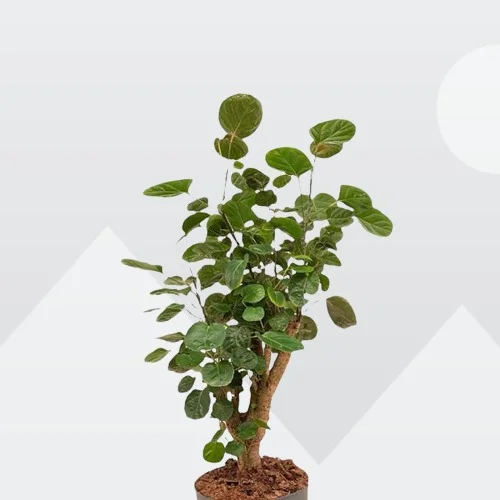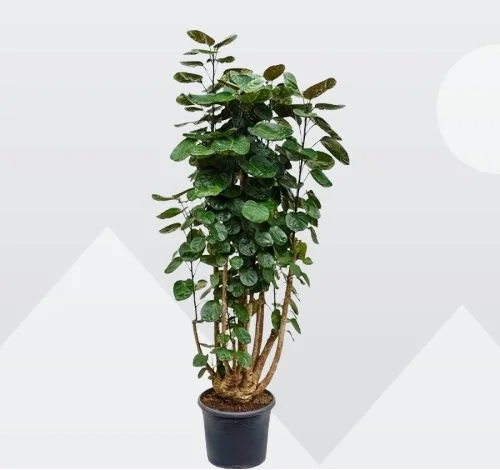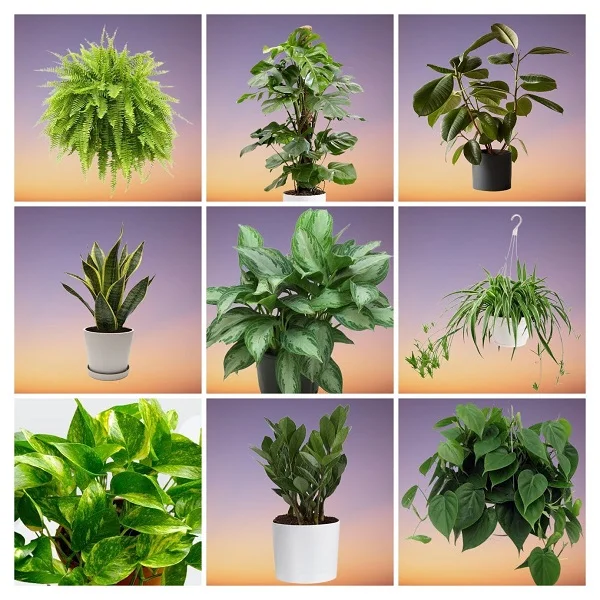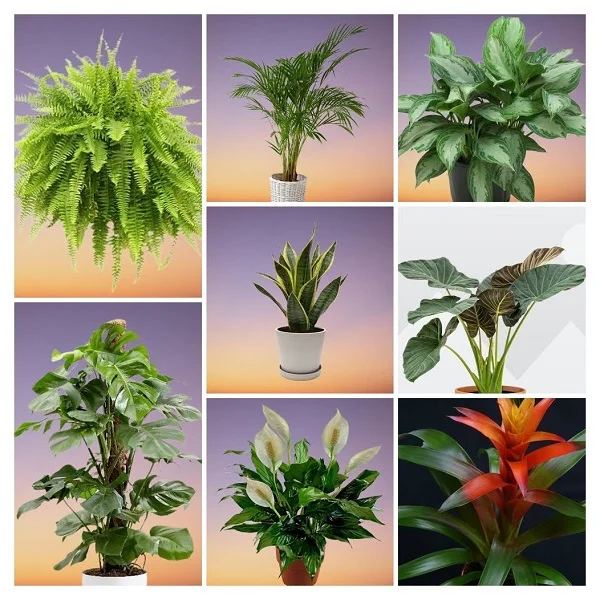Shield Aralia (Polyscias scutellaria) Care Indoors, Propagation and Common Problems
Some links in this post may be affiliate links
Shield Aralia Plant (Polyscias scutellaria) requires bright indirect light, average warmth, moderate humidity and moderately moist, rich, well-drained soils coupled with monthly feeding in the growing season.
Shield Aralia is relatively low-maintenance once you understand its needs. In this guide, we cover everything you need to know about growing Shield Aralia indoors, from lighting and watering to propagation and troubleshooting common problems. But first, let's get an overview of this plant.
Polyscias scutellaria also called Plum Aralia bears attractive round leaves and is among the popular tree-like plants as it can grow to a height of about 6 metres.
Plum Aralia leaves are alternate or spirally arranged on the stems and they are usually clustered at the tips of the branches.
The leaves and roots have been used as an antiseptic and deodorant. The shredded plant has aromatic properties that can be mixed with meat or fish to conceal the odor.

Botanical name: Polyscias scutellaria
Family: Araliaceae
Common names: Shield Aralia, Plum Aralia
Origin
Polyscias scutellaria is native to the Southwest Pacific islands where it is found growing as an understory plant.
Types of Polyscias
Types of Polyscias for growing indoors include;
1. Polyscias fruticosa commonly called Ming Aralia
2. Polyscias balfouriana commonly called Aralia balfouriana.
Is Polyscias scutellaria poisonous?
Polyscias scutellaria is toxic to pets as outlined by ASPCA. It contains saponins which if ingested will cause swelling and burning in the mouth and throat, vomiting, diarrhea and abdominal pains. Shield Aralia is toxic to cats, dogs and other pets.
Shield Aralia benefits
- Low maintenance: Requires minimal care once established.
- Unique foliage: It bears attractive round leaves.
- Large size: Makes it perfect for a bold statement plant.
- Aromatic properties: Can be shredded and mixed with meat or fish to conceal the odor.
- Air purification: It gets rid of toxins like formaldehyde, benzene, xylene, and toluene.
Shield Aralia Plant Care Indoors
Now, let's get into details on Shield Aralia indoor care for a lush and thriving tree-like plant, to add an elegant, upright presence to your space.
Shield Aralia Plant blossoms in bright indirect light (filtered light), moderate warmth of 18-240C, humidity of 50-60% and moderately moist, fertile, well-drained, all purpose soils coupled with monthly feeding during the growing season.
Polyscias scutellaria requires regular pruning to keep it neat, promote a bushy, compact growth and rejuvenate growth. Repotting is needed every 2 years when it has outgrown its pot as it grows best when pot-bound. Keep reading for more on these growing conditions and how to achieve them.

Light Requirements
Shield Aralia grows best in bright indirect light. Place it infront of a large well-lit window. However,it will adapt to light shade but will grow much slower.
Too low light will result in leggy growth and sparse leaves. Move the plant to a brighter spot or invest in a grow light if the natural light is not enough.
Though it can adapt to a few hours of morning sunshine, keep it away from hot direct sunlight to avoid scorching; brown leaf marks and crispy leaf edges.
Pro tip: Regularly rotate the pot to ensure the plant receives light on all sides for uniform growth to prevent unbalanced growth.
Temperature and Humidity
Shield Aralia Plant thrives in an average warmth of 18-240C. Keep it away from cold drafts as it does not like cold temperatures at all and may lead to leaf drop.
Plum Aralia requires a high humidity of 50-60% to thrive. Very dry air can cause leaf curling, browning, and dropping. To up humidity, set the pot on a wet pebble tray, use a cool mist humidifier or group the plants together.
Pro tip: Make sure that there is good air flow to discourage fungal diseases infestations.
Watering
Water your Shield Aralia Plant liberally during the growing season and allow the top 2-3 inches of soil to dry out between waterings. Keep the soil moderately moist but not soggy as it can cause yellowing and leaf drop.
Lessen watering in the cold period to maintain the soil slightly moist as growth is minimal at this time. Never allow the soil to dry out completely as it may cause the plant to drop all its leaves.
Ensure that the pot has a drainage hole to prevent the soil from getting soggy soil as the plant does not like to sit in soggy soil and may lead to root-rot.
Fertilizer
Feed Shield Aralia monthly during the growing season with a balanced, liquid fertilizer. Avoid over-fertilizing; it can cause leaf burn. Stop feeding in the cold season to avoid fertilizer-burn as growth is minimal at this time.
Flush out accumulated salts arising from fertilizers every 2-3 months by running a stream of water through the soil until it drips through the drainage hole. Let the stream of water run for a few minutes and repeat the process several times.
Potting Mix
Plum Aralia soil should be a well-draining, nutrient-rich mix that holds some moisture but does not get soggy. A mix made up of 2 parts potting soil (for nutrients), 1 part perlite or sand (for drainage) and 1 part peat moss or coconut coir (for moisture) is ideal for this plant.
Repotting
Repot your Shield Aralia every 2 years only when they have outgrown the current pot as it grows best when root-bound. Use a pot size larger than the current one to avoid overpotting. Make sure that the pot has a drainage hole to prevent the soil from getting soggy as it can lead to root-rot. Check out these self watering pots on Amazon.
Pruning & Grooming
Pruning and grooming Plum Aralia involves:
- Pinching-back of the growing tips to encourage a bushy and compact growth.
- Removal of yellow and dead leaves to keep the plant neat and minimize pests and diseases.
- Cutting back the overgrown plant to rejuvenate growth.
- Cleaning the leaves regularly by damp wiping with a soft cloth to get rid of dust and to discourage pests and diseases.
Pro tip: Always use a clean, sharp pair of pruning scissors to prevent disease transmission.
Propagation
Polyscias scutellaria propagation can be done from stem cuttings in spring through summer (growing season).
Propagating Polyscias scutellaria from stem cuttings
Stem cuttings propagation is an easy and beginner-friendly method. Polyscias scutellaria stem cuttings can be rooted in water or in soil.
1. Polyscias scutellaria propagation from stem cuttings in water
- Take 4-6 inches stem cuttings from a healthy Shield Aralia Plant. Make sure that each has at least two leaf nodes.
- Remove most of the leaves from the bottom of the stem cutting. Retain at least 2-4 leaves at the top.
- Dip the lower cut end of the cutting in a rooting hormone to encourage rooting.
- Place the cuttings in a jar of plain water or in a propagation station.
- Cover the set up with a plastic bag or a humidity dome to enhance rooting.
- Position the set up in a brightly-lit spot away from direct sunlight and change the water every 5-7 days.
- When the roots are about 2-3 inches, transfer the cuttings into individual pots in moist, well-drained soil.
- Keep the soil slightly moist until new plants are well established after which you can begin routine care.
2. Polyscias scutellaria propagation from stem cuttings in soil
- Take 4-6 inches stem cuttings from a healthy plant. Ensure each has at least two leaf nodes.
- Strip off most of the leaves from the bottom of the stem cutting. Retain at least 2-4 leaves at the top.
- Fill small pots (6-8 inches wide) with a sandy rooting soil and moisten it slightly.
- Dip the lower cut end of the cutting in a rooting hormone to hasten rooting.
- Carefully, insert 2-3 inches of the lower cut end of the cutting into the moist sandy soil.
- Cover the pots with clear plastic bag to create a humid atmosphere which enhances root development.
- Place the set up in a warm (21-270C), well-lit spot away from direct sunlight to avoid cooking the cuttings.
- Note: Plum Aralia stem cuttings and newly propagated plants rot easily at the base and in the roots therefore do not mist the leaves and maintain the soil moist but not wet.
- The cuttings will begin to root after 4-6 weeks. You will know the cutting has rooted when you see new growth.
- Once rooting has taken place, gradually phase out the plastic bag covers.
- Do not transplant the new plants as Polyscias scutellaria does not like to be disturbed. It is advisable to start the cuttings in pots with adequate room for the young plants.
Pro tip: For a fuller plant, transfer several cuttings into one pot.
Related content: How to propagate Polyscias fruticosa (Ming Aralia) in 3 Easy Ways.

Shield Aralia Problems and Solutions
Polyscias scutellaria problems include dropping leaves, brown leaf spots, yellowing and wilting, plant dying, pests and diseases among others. Keep reading for more on these problems, their remedies and solutions.
Dropping leaves
Some leaf drop in Shield Aralia is normal. However, excessive leaf drop is due to a sudden change in growing conditions especially in lighting and watering. Avoid moving the plant to a new location before you acclimate it. Water consistently while avoiding soggy soil and dried out soil for prolonged periods.
Brown leaf spots
Brown leaf spots in Plum Aralia are caused by underwatering. Water when the top 2-3 inches of soil are dry. Never allow the soil-ball to dry out completely.
Yellowing and wilting leaves
Yellowing and wilting leaves in Shield Aralia Plant is an indication of root-rot which is promoted by soggy soil. To save the plant, take it out from its pot, clean off the soil from the roots and inspect the roots. Cut away brown-black mushy roots and treat the remaining roots with a fungicidal solution.
Clean and disinfect the pot with the fungicidal solution and repot the plant in fresh soil. Keep it dry for a few days before beginning the regular watering.
Ensure that the soil is free-draining and the pot has a drainage hole to avoid getting soggy soil in the future. Allow the soil to dry out slightly between waterings. Never allow the plant to sit in soggy soil.
Plant dying
Shield Aralia Plant is dying due to overwatering causing the soil to become soggy. Make sure that the soil is free-draining and the pot has a drainage hole to prevent the soil from getting soggy.
Allow the soil to dry out a little between waterings during the growing season to keep the soil moderately moist. Cut down on watering in the cold season to maintain the soil slightly moist. Do not allow the soil to dry out completely. Learn more on how to water houseplants correctly.
Pests
Pests in Shield Aralia are spider mites especially where air humidity is low or there is inadequate watering. Isolate the affected plant to prevent spread to other plants and treat with an insecticidal solution.
Raise humidity to discourage future pest infestation; set the pot on a wet pebble tray or use a cool mist humidifier. Maintain the soil moderately moist and never allow the soil to dry out completely to discourage pest infestation.
Yellowish-green young leaves
Lack of nutrients is the cause of yellowish-green young leaves in Plum Aralia. Feed the plant monthly with a balanced, liquid fertilizer during the growing season but do not feed during the cold season as growth is minimal at this time.
Flush out of accumulated fertilizer deposits from the soil regularly by running a stream of water through the soil for some time and repeating the process several times.
Conclusion
Shield Aralia (Polyscias scutellaria) is a beautiful, statement-making houseplant that brings a tropical touch to any space. With proper light, watering, and occasional pruning, it will thrive for years to come.
You liked it? Share on social media.
Related Content
Amazon Associates Disclosure
Homeplantsguide.com is a participant in the Amazon Services LLC Associates Program, an affiliate advertising program designed to provide a means for sites to earn advertising fees by advertising and linking to amazon.com.





